- europages
- >
- COMPANIES - SUPPLIERS - SERVICE PROVIDERS
- >
- strain gages
Results for
Strain gages - Import export

BURSTER PRÄZISIONSMESSTECHNIK GMBH & CO KG
Germany
The 7270 TRANS CAL can run on standard or rechargeable batteries for portable use or from an external power supply. The handy model 7270 digital indicator supports load cells, pressure sensors and torque sensors based on strain gages. The 14 mm high display shows the current measured value. The TARE function allows any base load that may be present to be zeroed. The clear, well organized control structure enables quick and easy configuration of the TRANS CAL. The 7270 is equipped with a charge state indicator. Features: — Easy to operate - For all load cells, pressure sensors and torque sensors based on strain gages — Tare function - Excellent value for money - Built-in charge controller
Request for a quote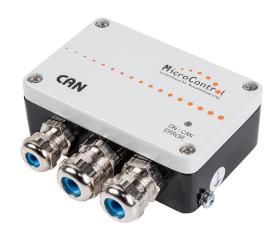
MICROCONTROL GMBH & CO. KG - SYSTEMHAUS FÜR AUTOMATISIERUNG
Germany
The µCAN.1.sg-BOX is a decentralized CAN module for the acquisition of strain gauge or resistance bridge signals. The CAN interface supports the protocol CANopen.
Request for a quote
MICROCONTROL GMBH & CO. KG - SYSTEMHAUS FÜR AUTOMATISIERUNG
Germany
The module µCAN.1.sg-SNAP is designed to acquire strain gauge measurement signals such as forces, torques, sequences and voltages and transfers them via CAN.
Request for a quote
AMETEK SPECIALTY METAL PRODUCTS
United States
Evanohm® R is a unique resistance alloy with high electrical resistivity and very low temperature coefficient of resistivity (TCR). The alloy is produced by melting and conditioning practices which result in a low level of pinholes at ultra-thin thicknesses. This combination of attributes with inherent corrosion resistance makes it suitable for a variety of strain gauge, foil heaters and airbag igniters. The alloy is supplied with 90% cold reduction which has a positive TCR of about 70 PPM/ºC. A stabilizing heat treatment (approximately 475ºC) during manufacture of finished parts adjusts the TCR to a desired value. The heat treatment virtually eliminates any drift tendency of the resistivity. A heat-treat curve for each melt is developed at Hamilton and is made available as a guide in regulating TCR. Sizes Evanohm® R is available from Hamilton Precision Metals as foil and strip product in thicknesses from 0.0005” to 0.010” (0.0127 mm to 0.254 mm) and in widths up to 12.0”
Request for a quote
EMSYST
Slovakia
Extremely high load sensor with good metrological properties. Range: from 500 kN up to 3 MN Force dir: Tension / Compression
Request for a quote
EMSYST
Slovakia
Precise force sensor, not sensitive to lateral forces, well suited for testing. Range: from 1 kN up to 500 kN Force dir: Tension / Compression
Request for a quote
EMSYST
Slovakia
In-Line robust load cell with very good metrological characteristics suitable for measurements in demanding conditions like tanks weighting. Range: from 500 N up to 200 kN Force dir: Tension / Compression Version EMS151 has built-in signal conditioner with voltage or current output.
Request for a quote
EMSYST
Slovakia
Version EMS111 has built-in signal conditioner with voltage or current output. Range: from 200 N up to 10 kN Force dir: Tension / Compression
Request for a quote
EMSYST
Slovakia
Robust type load cell with a wide capacity range designed for universal use. Range: from 100 N up to 500 kN Force dir: Compression Version EMS51 has built-in signal conditioner with voltage or current output.
Request for a quote
EMSYST
Slovakia
Universal membrane load cell with robust construction is suitable for industrial use. The force must be applied in the axis of the sensor. Range: from 1 kN up to 50 kN Force dir: Tension / Compression Version EMS41 has built-in signal conditioner with voltage or current output.
Request for a quote
EMSYST
Slovakia
Universal membrane force sensor for general use. The load is applied via external threads. Range: from 100 N up to 5 kN Force dir: Tension / Compression
Request for a quote
EMSYST
Slovakia
Universal membrane force sensor for general use. The load to be measured is applied via external threads. Suitable for use in manufacturing plants as well as in laboratories and testing. Range: from 50 N up to 5 kN Force dir: Tension / Compression Version EMS21 has built-in signal conditioner with voltage or current output.
Request for a quote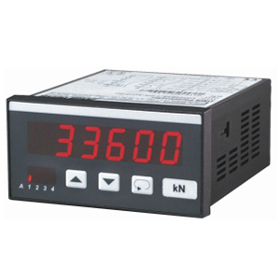
GHM MESSTECHNIK GMBH
Germany
Display of DMS sensors 8 programmable parameter sets Up to 4 alarm outputs
Request for a quote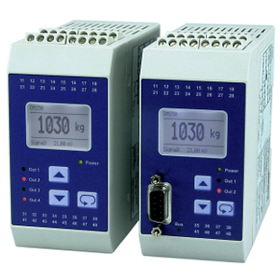
GHM MESSTECHNIK GMBH
Germany
Weight Force Pressure Torque For signals from the Ex area LCD display with plain text Digital interface
Request for a quote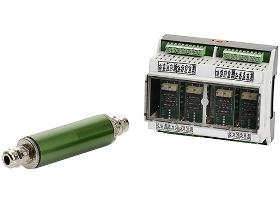
BURSTER PRÄZISIONSMESSTECHNIK GMBH & CO KG
Germany
Situations often occur in practice in which it is necessary to place a measuring amplifier immediately in the neighborhood of the sensor in order to be able to access a standard signal there. In this way, long distances to the evaluating electronics can be covered. This task can ideally be performed by the 9236 in-line measuring amplifier. With its high degree of protection (IP67) its singlechannel version can be integrated into the application even in the tough environment outside the switch gear cabinet. — Automatic production machinery — Laboratory measurements — Integration into customer‘s circuit boards — Field measurements Features: — Operates with up to 4 measuring channels — Voltage output 0 to ± 5 V / 0 to ±10 V — Protected against reverse connection and short-circuit — Also available as circuit board without housing — Simple configuration using DIP switch — High degree of protection up to IP67
Request for a quote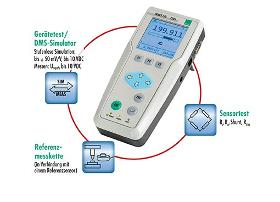
BURSTER PRÄZISIONSMESSTECHNIK GMBH & CO KG
Germany
The multipurpose digital indicator TRANS CAL 7281 can be used wherever there is a need to perform high-precision, in-situ calibrations of sensing components used in equipment such as presses, torque tools or pressure-regulating systems. An optional factory calibration certificate or German-accredited DKD/DAkkS calibration certificate can be provided when the measurement device needs to be used as a reference. This provides a quick and cost-effective way of assessing a system with traceable documentation of measurement results. If a reference measurement cannot be made because the sensor location is difficult to access, it is still possible to test the zero point, the input, output and isolation resistance as well as the calibrating offset of the fitted sensor. It is also possible to check the indicating device by measuring the excitation voltage and simulating the characteristic values (mV/V or V) of the sensor used.
Request for a quote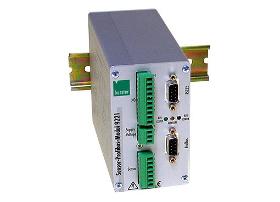
BURSTER PRÄZISIONSMESSTECHNIK GMBH & CO KG
Germany
The newly developed sensor PROFIBUS module model 9221 is predestined for the integration of various analog sensor output signals into complex, net worked and peripheral automation structures. This module finds its fields of application in the industrial automation technology as well as the test rig technology based on its secure and reliable transfer mode, the fast transfer speed and its simple construction. The inputs (e.g. PLC signal gauge) and outputs in addition to the external control allow a zero compensation by trigger via proximity switch or fast alerting on passing of set point values. Industrial type connection and mounting techniques enable the user the adaption and integration in the existing mechanical and electrical environment. The excellent quality of measurement together with the high grade capture of mean values also enable the application in research and development. The use of standardized PROFIBUS protocols makes the connection an easy task for the programmer.
Request for a quoteDo you sell or make similar products?
Sign up to europages and have your products listed
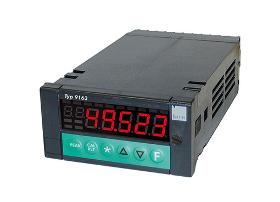
BURSTER PRÄZISIONSMESSTECHNIK GMBH & CO KG
Germany
The 9163 process value indicator covers a wide range of applications in which process values need to be measured, displayed, analyzed and transferred to higher-level control systems. Typical applications include measuring geometric values in production, for instance differential measurements, or testing material properties in the laboratory. The measured values can be transferred via PROFIBUS, RS232 interface or analog output. The multi-channel version can be used with up to four sensors. These sensors can be combined using mathematical functions, so that even complex measurement tasks can be performed with just the one instrument. Visual alarms on the display make it easier and more convenient to assess when values lie off-limits. Up to four configurable outputs are available as relay or logic outputs. The excellent measurement accuracy of 0.1% also makes this instrument suitable for high-precision applications.
Request for a quote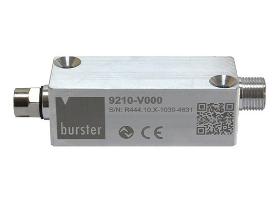
BURSTER PRÄZISIONSMESSTECHNIK GMBH & CO KG
Germany
The new strain gage amplifier with IO-Link interface enables digitalization of the measurement technology right from the sensor. Its compact design and high degree of protection allow the instrumentation amplifier to be used practically anywhere in the field. Strain gage sensors typically have an output voltage of a few millivolts. In industrial environments, e.g. in the vicinity of electric motors or frequency converters, interference can affect the measurement result when transmitting analog signals. This is reliably avoided using the new strain gage amplifier with IO-Link interface. The analog link between the sensor and instrumentation amplifier is kept as short as possible, the standardized IO-Link communication is fully digital and interference-free. The amplifier is powered directly via the IO-Link interface – a standardized 5-wire cable with M12 socket. Strain gage sensors can be connected via a 4-pin M8 connector.
Request for a quote
CLA CLINICAL LABORATORY AUTOMATION SA
Switzerland
The CLA SC-002 is bidirectional, resistive type force sensor. The measurement system is composed of a semiconductor strain gage. The measurement shaft is made of a 0.5mm diameter axis with a positioning notch for calibration and measurement. The design of that sensor is specially made for a high resonance frequency.
Request for a quote
BURSTER PRÄZISIONSMESSTECHNIK GMBH & CO KG
Germany
The sensor element consists of a double bending beam with applied strain gages. Changes in the ohmic resistance of the strain gage fullbridge caused by applied forces are converted into electrical voltages. The precise value (characteristic value) of the output voltage, resulting from the application of a rated force to the sensor, is specified in the accompanying calibration protocol. The sensor has to be mounted by two screws on the cable side. The opposite side is meant to receive applied forces (loads). Once the rated stress or strain is exceeded by 20 %, further deflection of the bending beam is prevented by an integrated, mechanical stop. This protects the sensor element against permanent deformation.
Request for a quote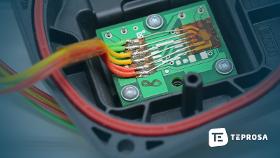
TEPROSA GMBH
Germany
We are specialist in strain gage strain measurements on printed circuit boards and all other components. We carry out the application of strain gages and determine for you the actual stresses that occur, or the strain (also strain-rate) on a specific or several components in the manufacturing or assembly process. We perform our DMS measurements with certified measurement technology and according to the specifications of IPC/JEDEC-9704A. Expert advice from TEPROSA When measuring strain, in addition to many factors such as the appropriate measurement technology, it is also important to rperform the strain measurement correctly and to ensure that the sensors record the forces correctly. To ensure that the deformation of an object is correctly determined, it is therefore crucial to select the right strain gauges (also known as measuring strips) and to place them in the correct position on the measured object.
Request for a quote
BURSTER PRÄZISIONSMESSTECHNIK GMBH & CO KG
Germany
The tension and compression load cell model 8435 enables universal and fast installation, requires hardly any installation space and upgrades with technical data that are readily achieved by larger sensors. Due to its excellent price-performance ratio with regard to its mechanical and electrical data, the force sensor finds its place in products that are also manufactured in larger quantities and calculated with a small budget. This model of load cell uses proven strain gage technology to perform measurements. Strain gages are applied to the sensitive element and connected to form a full bridge. FEATURES Measuring ranges from 0 ... 200 N up to 0 ... 5000 N Small dimensions Inexpensive execution Stable anti-kink protection Made of high quality stainless steel Connecting cable suitable for drag chains burster TEDS optionally available
Request for a quote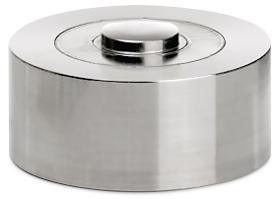
BURSTER PRÄZISIONSMESSTECHNIK GMBH & CO KG
Germany
Thanks to its compact shape and three fixing holes on its underside, the 8526 compression load cell can be used in a variety of applications. With its wide choice of measuring ranges from 0 ... 100 N up to 0 ... 1 MN, it really can cover a wealth of measurement tasks, from the laboratory to use in heavy industry. The integral load button provides an easy and reliable means of applying the force to be measured. Angle errors in the load application with a deviation from the measurement axis of up to 3° have only a minor influence on the measurement signal. For ideal measurement accuracy, the load cell should be mounted on a surface that has been ground and has a hardness of at least 60 HRC. The model 8526 load cell is designed with an internal elastic membrane, to which strain gages are attached. When a compressive load is applied to the load cell, the membrane is elastically deformed and transfers its tension to the strain gages.
Request for a quote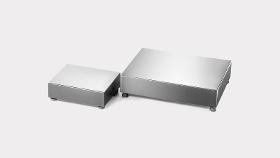
BIZERBA SE & CO. KG
Germany
Designed to be used for reference weight establishment Inside the load receptor there is an aluminum strain gauge load cell which is perfect for the use in dry areas. As a standard fitted with protection IP41, optionally available with IP65. As compared to other precision scale technologies the iL Precision 65F/SP impresses not only by its simple design but also by reaching its weighing accuracy w/o lever work or motorized calibration device.
Request for a quote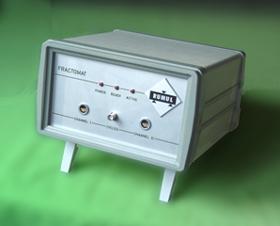
RUMUL RUSSENBERGER PRÜFMASCHINEN AG
Switzerland
The crack length measuring system FRACTOMAT is a system that works according to the indirect potential method, which is used for the exact measurement and control of the crack length and the crack propagation in fracture mechanics samples. The various interfaces allow use in any test set-up, including any other makes of testing machine. The transducer consists of a crack length measuring film (KRAK GAGE), which is glued to the specimen in an electrically insulated manner like a strain gauge and connected to the FRACTOMAT.
Request for a quote
BURSTER PRÄZISIONSMESSTECHNIK GMBH & CO KG
Germany
The measuring element of the load cell consists of a double bending beam on which strain gages are applied. The applied force detunes the measuring bridge so that a proportional output voltage is generated. The strain gages on the measuring element are protected against dirt and water spray by a rubber bellows. The sensor can be easily mounted via two mounting holes. The tension or compression force to be measured is introduced at the opposite end perpendicular to the sensor axis. Due to its special design, the influence by an extension (e.g. touch finger) on the measuring signal is low. Overload protection can be realized with little effort using a mechanical stop. FEATURES For tension and compression forces Measuring ranges from 0 ... 5 N to 0 ... 2 kN Relative non-linearity: ≤ ±0.1 % F.S. Very low mounting height Simple force application Material aluminium or stainless steel Special design on request burster TEDS optionally available
Request for a quote
BURSTER PRÄZISIONSMESSTECHNIK GMBH & CO KG
Germany
The measuring element of this load cell consists of a double bending beam with strain gauges, the resistance of which changes with the application of force. Upon applying a voltage to the strain gauge bridge, the change in the strain gauge resistance is converted into output voltage, which is directly proportional to the force. The strain gauges and the entire measuring element are protected from water spray by metal cover including sealing material. The tensile or compressive load to be measured is applied to the sensor element through the M6 threaded hole located on each end face. The load can be applied easily, along the sensor axis. This serves to prevent falsification of the measured values. Overload protection can be realized with little effort using a mechanical stop. FEATURES Measuring ranges from 0 … 20 N to 0 … 880 N Relative non-linearity: ±0.25 % F.S. Many load cycles Protection class IP54 Excellent price-performance ratio burster TEDS optionally available
Request for a quote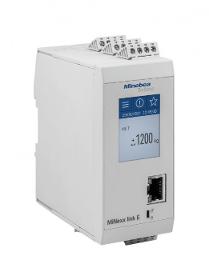
MINEBEA INTEC GMBH
Germany
As the first weight transmitter for analogue strain gauge load cells, the Link E has a high-contrast touch display that makes it easy to read and easy to find all settings and information. Configuration takes place via your favourite web browser – no additional software required. ‘Smart Calibration’ enables adjustment entirely without the need for weights. This keeps installation and access times to a minimum. The Link E gives you the option to choose from nine widely-used interfaces for any application, including ModBus-TCP, Profibus, ProfiNet, DeviceNet or Ethernet/IP. The Link E is the result of the continued development of the successful PR 5211.
Request for a quoteResults for
Strain gages - Import exportNumber of results
85 ProductsCountries
Company type
Category
- Sensors (35)
- Measurement and control instruments (15)
- Weighing and dosing equipment (7)
- Electronic data processing - microcomputers (6)
- Measurement and regulation equipment and instruments - pressure (6)
- Weight and mass - measurement and regulation instruments (2)
- Automation - systems and equipment (1)
- Calibration equipment (1)
- Cold rolled steel strips (1)
- Electricity - import-export (1)
- Electronics - import-export (1)
- Frequency and tuning devices (1)
- Laser - cutting and welding machines (1)
- Measurement - Equipment & Instruments (1)
- Optical measuring equipment (1)
- Sheet metal and strips, tinplate (1)
- Steel sheets and strips (1)
- Testing equipment (1)